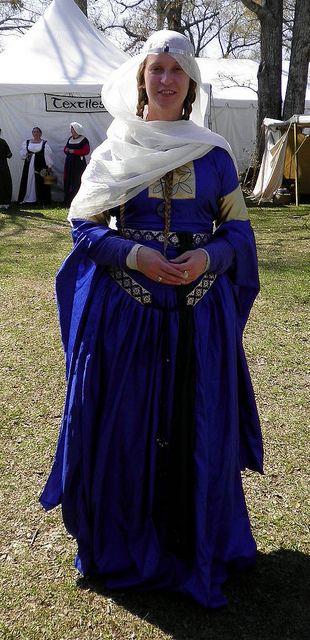













Powered By Sispro1
Refresher for the Beginner and Professional
Copyright All Rights Reserved by Nigel G Wilcox E-Mail: ngwilcox100@gmail.com
Designed by Nigel G Wilcox
The Paragon Of Metal Detecting
& Archaeology
& Archaeology
Pages

Member NCMD
The Normans Menu
Sterling Coins
Norman Attire
continued....
Attire
Attire - Norman (examples)
Looking After Your Finds - Identification - Attire
The Normans were among the widely-traveled inhabitants of Europe by the 11th century. They had descended from the Vikings, initially they inhabited Normandy in northern France and eventually spread to Sicily, Italy, England and other parts of British Isles as well as to the kingdoms that came into being during early Christian Crusades.
Norman Men s Clothing
Until the middle of the 10th century, Normans relied mainly on their battlefield prowess to thrive since they had few other means of earning sufficient subsistence. Consequently, Norman men dressed conservatively and in a way which reflected their martial interests.
The dresses of this period were both plain and practical. At the time of Norman Conquest of England in 1066, for instance, Normans wore woollen tunics made in a close-fitting style, sometimes together with a waistband to keep the tunic in place.
On top of the tunic, the men wore a cloak. Woollen drawers were worn on the legs together with woollen socks and leather shoes. Following the 1066 Conquest and settlement in England, men s clothing evolved to include longer tunics with cuts on both sides as well as the use of ankle garters and embroidered cuffs.
Important Facts about Norman Clothing:
Norman clothing embraced cultural influences of Italy, France, England, Sicily and Moorish Iberia.
Norman clothes were made from fine wool or linen and were fairly simply until the mid-11th century.
After the Norman Conquest of England in 1066, Norman clothing began to become more elaborate and lavish.
Norman women often wore a wimple on the head and thin veils to cover their faces, a practice Normans borrowed from Saracens in the Holy Land.
Intricate brooches were used by the Normans to keep their cloaks in place.
Normans started using Anglo-Saxon styles of embroidery and lacing once they settled in England after 1066.
A hood was a common part of Norman clothing, absorbed from the Anglo-Saxon culture of England.
Norman Men s Clothing
Until the middle of the 10th century, Normans relied mainly on their battlefield prowess to thrive since they had few other means of earning sufficient subsistence. Consequently, Norman men dressed conservatively and in a way which reflected their martial interests.
The dresses of this period were both plain and practical. At the time of Norman Conquest of England in 1066, for instance, Normans wore woollen tunics made in a close-fitting style, sometimes together with a waistband to keep the tunic in place.
On top of the tunic, the men wore a cloak. Woollen drawers were worn on the legs together with woollen socks and leather shoes. Following the 1066 Conquest and settlement in England, men s clothing evolved to include longer tunics with cuts on both sides as well as the use of ankle garters and embroidered cuffs.
Important Facts about Norman Clothing:
Norman clothing embraced cultural influences of Italy, France, England, Sicily and Moorish Iberia.
Norman clothes were made from fine wool or linen and were fairly simply until the mid-11th century.
After the Norman Conquest of England in 1066, Norman clothing began to become more elaborate and lavish.
Norman women often wore a wimple on the head and thin veils to cover their faces, a practice Normans borrowed from Saracens in the Holy Land.
Intricate brooches were used by the Normans to keep their cloaks in place.
Normans started using Anglo-Saxon styles of embroidery and lacing once they settled in England after 1066.
A hood was a common part of Norman clothing, absorbed from the Anglo-Saxon culture of England.




examples
Women’s Clothing
Exposure of Norman society to many different cultures was better reflected in the dressing of Norman women. The typical dress of a Norman noblewoman included a chemise, a gown and a cloak. The chemise was the primary layer of dress worn by the women and was unusually long in length. On top of it, the women wore a gown which was loose in fitting and was knee-length.
Finally, a cloak was worn on top of the gown. The gown s neck-opening usually carried elaborate embroidery while precious brooches were used to clasp a cloak in place. Towards the late 11th and 12th centuries, cloaks evolved to include bands used together with the brooches which ran around the shoulders of the wearer, giving the cloak a tighter look.
Women s clothing also began to utilise elaborate lacing by the 12th century. Head-coverings such as wimples were also used by the Norman women, a feature probably borrowed from the Saracens whom the Normans fought in the Holy Land.
Exposure of Norman society to many different cultures was better reflected in the dressing of Norman women. The typical dress of a Norman noblewoman included a chemise, a gown and a cloak. The chemise was the primary layer of dress worn by the women and was unusually long in length. On top of it, the women wore a gown which was loose in fitting and was knee-length.
Finally, a cloak was worn on top of the gown. The gown s neck-opening usually carried elaborate embroidery while precious brooches were used to clasp a cloak in place. Towards the late 11th and 12th centuries, cloaks evolved to include bands used together with the brooches which ran around the shoulders of the wearer, giving the cloak a tighter look.
Women s clothing also began to utilise elaborate lacing by the 12th century. Head-coverings such as wimples were also used by the Norman women, a feature probably borrowed from the Saracens whom the Normans fought in the Holy Land.




examples






















